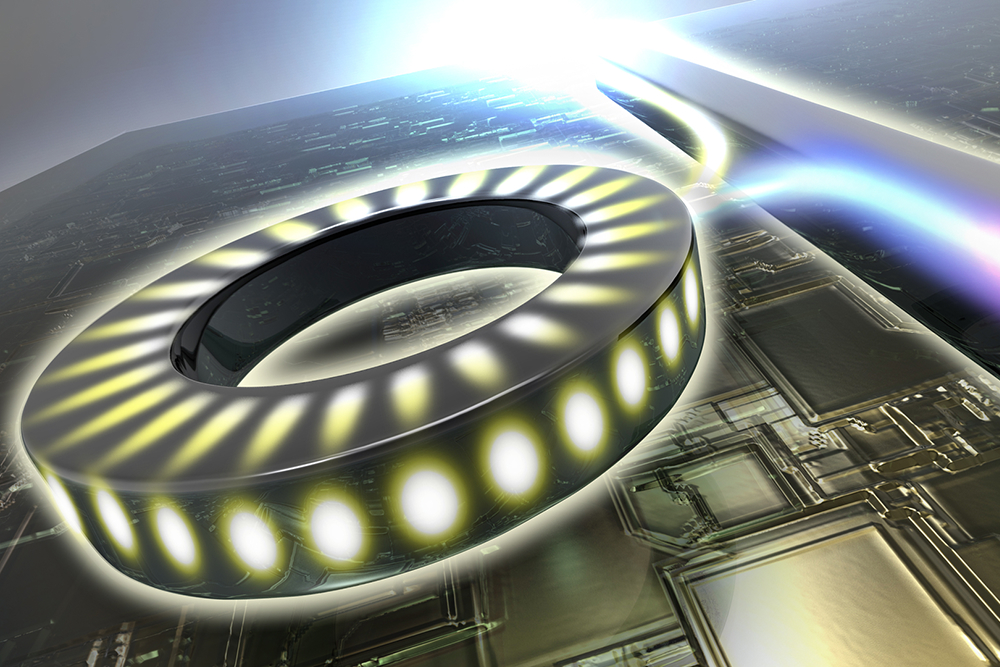Controlling Silicon Vacancies in Silicon Carbide Resonator with Spin-Acoustic Strategy

The article discusses a featured topic on October 20, 2023
Having undergone the rigorous editorial process of Science X, this report has been credited with significant attributes such as:
- - Having been fact-checked
- - Being based on a peer-reviewed publication
- - Citing a trusted source
- - Having been proof-read
Ingrid Fadelli, Phys.org is the author of the article.
Bulk acoustic resonators, material structures where acoustic waves get amplified or unwanted noise gets filtered out, have been identified as having a crucial role in modern RF communication such as in Front-End Modules (FEM) in iPhones. Moreover, they have valuable potential in various other advanced scientific applications, including quantum technologies and imaging devices.
No matter their potential, precise monitoring of the acoustic energy within these devices over time poses a challenge. This limits their use in making filters and signal processes reliable and high-performing.
A group of researchers from Harvard University and Purdue University recently addressed this problem by proposing a strategy for controlling and reading out silicon vacancies inside a bulk acoustic resonator based on 4H silicon carbide (SiC). As published in Nature Electronics, their strategy can be used to fine-tune the frequencies amplified or absorbed by defects in 4H SiC via bulk acoustic resonators.
'Our motives for conducting this research were centred around the mechanical dynamics of a classical system using a quantum sensor,' Jonathan R. Dietz, a co-author of the study, shared with Phys.org. Our labs already collected resonators that could amass adequate energy for evaluating this interaction.'
The study builds on the researchers’ prior work, which introduced new-fangled acoustic resonators made using 4H SiC, known as lateral overtone bulk acoustic resonators (LOBARs). Notably, the potential of these resonators was demonstrated, in terms of high-quality factor (Q) optical resonators.
'To effectively manage silicon vacancies’ spin acoustic control, we opted for a device guaranteeing top quality resonances and gauged the spin-acoustic coupling via the confocal ODMR microscope,' explained Dietz. After this, we used the measured spin resonance to outline the acoustic waves in the LOBAR device accurately.'
During the study, the researchers demonstrated their proposed strategy's potential in controlling the spin-acoustic silicon vacancies in 4H SiC-based LOBAR devices. Dietz’s team conducted a frequency spectrum analysis when the resonator was in its high Q mode using optical read-outs. Alongside, they could create a device's resonance mode illustration by leveraging 2D imaging tools, which analysed the resonator and material defects' interaction.
'Our method of measurement is non-invasive,' added Boyang (Alex) Jiang, another author of the paper. 'Plus, since the fluorescence is associated only with the strain it couples to, our measured Q is the intrinsic Q of the SiC, eliminating the need for de-embedding in RF measurement.'
The approach presented by the research team could be used for precise gathering of measurements from LOBAR devices under ambient conditions without affecting their operation. Consequently, it could be put to use in characterising the acoustic properties of several microelectromechanical systems, whilst enabling greater control of quantum memory devices using acoustic vibrations as a quantum resource.
'Our research reveals that a commonly-found, easily measurable defect in silicon carbide is mechanically sensitive and can be robustly manipulated to make a non-invasive strain sensor,' remarked Dietz. 'For our forthcoming studies, we plan to realise the 3D visualisation of the strain in silicon carbide-based devices, similar to MRI. We are also keen on using the resonator and spins' feedback to control both systems simultaneously.'
The journal information states its source as Nature Electronics.
The article is credited to the Science X Network © 2023.




